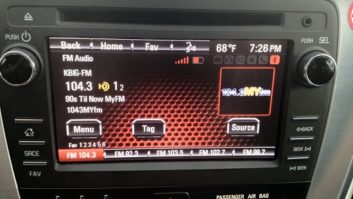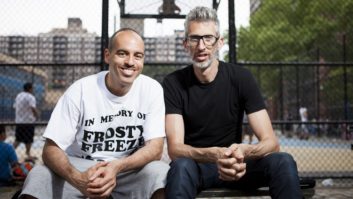NAB Show 2013: A Silver Convention
May 1, 2013 9:00 AM, By Chriss Scherer, editor
Another NAB convention has come and gone. For me, I’m running nearly non-stop for the six days I’m there. Much of my time is spent on the exhibit floor looking at new technology. On these rounds, there’s always time for some pleasantries, and there are three common questions that arise. Two relate to the physical demands: How are you holding up? How are your feet? (Funny how the feet are separated in this case.) The third arises with greater frequency as a person’s experience increases: How many NAB conventions have you attended?
This was my silver anniversary. I attended my first NAB convention in 1989 and have attended every year since. I know I don’t hold a record, but it is something of a milestone. (Dave Hultsman of Continental Electronics was attending his 50th convention, by the way.) As I shared my career event, I kept thinking about what was different between then and now.
Of course Las Vegas has changed considerably. All but one (in 1990) of the conventions I attended have been in Las Vegas. The first two Las Vegas conventions I attended I stayed in a motel on the strip. Yes, a motel. But the Strip looked very different then. The Landmark, the Stardust, the Frontier and many other hotels were still standing.
Of course Las Vegas has changed considerably. All but one (in 1990) of the conventions I attended have been in Las Vegas. The first two Las Vegas conventions I attended I stayed in a motel on the strip. Yes, a motel. But the Strip looked very different then. The Landmark, the Stardust, the Frontier and many other hotels were still standing.
At the 2013 NAB Show, a renewed interest in revitalizing the AM band was a common theme. But it’s not a new idea. In 1989, outgoing FCC Chairman Dennis Patrick was a speaker, and he noted the FCC’s efforts to help the AM service. He also criticized the abuse of translators. In 1989, Charlie Morgan popped champagne at the NRSC meeting to celebrate the FCC adoption of the AM RF mask standard NRSC-2.
An improvement for FM was also discussed so many years ago. FMX, a system intended to reduce the noise floor in stereo FM transmission, had been introduced a few years earlier, but it was not seeing the success anticipated by its inventors and subsequent intellectual property holders.
How about products from the exhibit floor?
Editing audio and video on a computer is a simple task today. There are even free audio editing tools available. But in 1989, a new product was introduced that touted it broke new ground in price and performance. It was the AKG DSE 7000, a stand-alone, computer-based multitrack audio editor. And it only cost $30,000. I used the DSE 7000, and for the day, it was quite a machine. The ability to slip tracks was amazing for someone who used multitrack tape for many years. And unlike previous multitrack digital editors, edits were completed quickly without waiting for the processor to crunch all the data.
Cart machines were still the kings of audio playback. That year, a new model from Broadcast Electronics was unveiled. Dolby also showed SR noise reduction for cart machines. R-DAT was still on the rise as a portable and long-form recording format. Radio Systems showed the RsDAT, a DAT machine with broadcaster-friendly connections and controls, and Panasonic unveiled a prototype DAT editing system.
An idea that gathered interest in 2013 was Omnia Direct; an interface to digitally transmit the composite output of an Omnia on-air processor to a Nautel transmitter. In 1989, a digital composite STL was shown from QEI called the CAT/LINK. And on the transmitter side, improvements in solid-state transmitters were being shown in 1989.
The Pacific Recorders and Engineering Radiomixer made its debut in 1989 as well. Stand-alone analog mixers are still available and viable today, but strong attention has turned to network audio routers and controllers.
For all the technology advances we have made, it’s interesting to realize that in some ways the arguments and challenges are still the same.
The final comparison covers the convention attendance. In 2013, the NAB Show drew more than 94,400 people. In 1989 there was a record crowd of 50,136.
So now I have my next 25 NAB conventions to look forward to.











